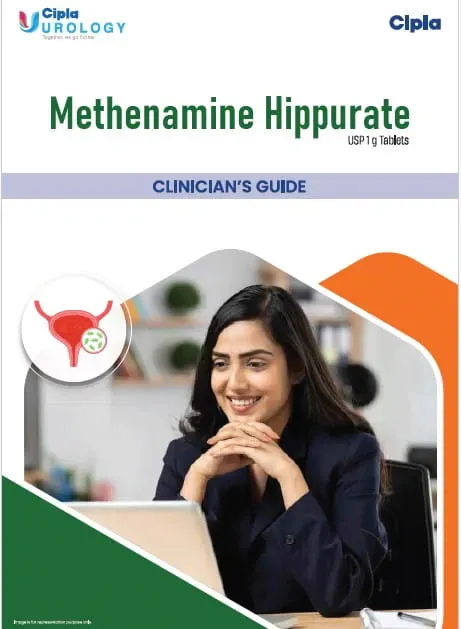ECCMID 2023: Management of Infections in Low- and Middle-income Settings
The main topic of discussion is the inadequacy of current empiric antibiotic treatments for severe bacterial infections in neonates and children in Southeast Asia and the Pacific, which is compounded by the rising problem of antimicrobial resistance.
The increasing antimicrobial resistance (AMR) problem in Southeast Asia and the Pacific is a significant concern. The number of deaths due to AMR is estimated to increase by 2050, and sepsis-related deaths are disproportionately affecting children and neonates (1:19-1:56). Each year, the low or low-middle-income countries (LMIC) have over 2.5 million sepsis-related deaths, with 10% occurring in children under five (03:38-03:58). WHO recommends giving ampicillin (or penicillin) and gentamycin as first-line antibiotic treatment for newborns with any signs of a severe bacterial infection or sepsis. However, high rates of culture-negative sepsis make diagnosing and managing infections in children challenging (04:19-04:46). Therefore, empirical antibiotics need to be efficacious. A study found that the current regimens have low coverage, especially in neonates, with amino penicillin, gentamycin, and third-generation cephalosporin showing very low efficacy (06:11-06:40).
The WISCA (weight incidence syndromic combination antibiogram) study analyzed 6,648 bacterial isolates from 11 countries in the Asia Pacific region and found that Klebsiella species and E.coli were significant causes of neonatal sepsis, while S. pneumonia was the most common in pediatric cases. However, compared with current treatment guidelines, antibiotics like amino-penicillin, gentamycin, and third-generation cephalosporin had alarmingly low coverage (below 50%) against these pathogens in neonates and children. This highlights the high resistance rates to commonly prescribe empirical therapies for neonatal and pediatric sepsis and meningitis in the Asia Pacific.
However, antimicrobial resistance poses a growing threat to treatment (06:58-10:00).
Linking sepsis aetiology, antimicrobial use, and antimicrobial resistance
The DASSIM study is an observational cohort study investigating 225 sepsis patients and 100 inpatient and community controls. Among the sepsis patients, 34% were diagnosed with tuberculosis, and the study found that tuberculosis treatment is associated with improved survival (17:15-18:45). The study also found a high prevalence of extended-spectrum beta-lactamase– (ESBL) in sepsis survivors and matched controls, with 83% of participants receiving ceftriaxone, which is expected to be effective in only 24% of cases. Therefore, antimicrobial exposure is a significant driver of ESBL carriage (19:05-21:32).
Neonatal sepsis in a tertiary care hospital in Sri Lanka: Reflections on rising antibiotic resistance over five years
In Southeast Asia, limited access to healthcare resources and a lack of availability of newer antibiotics contribute to the spread of antimicrobial resistance (AMR) and deaths due to neonatal sepsis (27:27-27:58). A study found that gram-negative bacteria, particularly Acinetobacter species, are the leading cause of neonatal sepsis. Still, they have shown over 50% resistance to third-generation cephalosporin over the years, with an upward trend in carbapenem resistance (29:57-30:34). The correlation between antibiotic consumption and carbapenem resistance in gram-negative pathogens causing neonatal sepsis is evident in the study (32:15-32:39). The current recommended empirical regimens for neonatal sepsis provide limited coverage for Sri Lankan neonates. High rates of neonatal multidrug-resistant infections highlight the urgent need in high-burden, resource-constrained settings for establishing antibiotic stewardship programs. There is a need for enhanced AMR surveillance and delineating the time course of MDR pathogen colonization and infection in neonates (33:55-34:50).
Antibiotic prescribing practices in community and clinical settings during the COVID-19 pandemic in Nairobi, Kenya
During the Covid-19 pandemic, healthcare systems, including antibiotic use practices, were significantly impacted. Although antibiotic use was high, data from LMICs was lacking (39:422-40:40). A study in Nairobi aimed to analyze antibiotic use patterns in community and clinical settings during the pandemic (40:45-41:05). The findings showed that 91.4% of pharmacies served clients with suspected Covid-19 infections, and 81.5% prescribed antibiotics without a prescription. Most of these clients had no confirmed Covid-19 diagnosis but presented symptoms instead. Azithromycin and amoxicillin-clavulanic acid were frequently co-prescribed, followed by levofloxacin and ciprofloxacin (44:20-47:38). Antibiotic use was significantly higher in Covid-19 wards than in general wards, and the most commonly prescribed antibiotics were azithromycin and ceftriaxone, often co-prescribed. Older Covid-19 patients or those with multiple comorbidities were more likely to receive more antibiotics. However, only 2% of antibiotic prescriptions for Covid-19 were supported by microbial investigations (48:11-50:35). These findings highlight the urgent need for sustained antibiotic stewardship programs (52:15-52:27).
Tuberculosis is a frequent cause of febrile illness among patients receiving cancer treatment in Uganda
In Uganda, tuberculosis is a common cause of fever among cancer patients receiving treatment (54:11-54:20). Although the microbiology of infections differs in high-income settings due to the high prevalence of HIV and TB, patients with cancer are still at higher risk of developing active TB (55:17-56:45). A recent study showed that 70% of cancer patients with fever had no identifiable cause, and among those with microbiologically confirmed infections, TB was the most frequent cause. Interestingly, the incidence of TB did not differ based on HIV status. The mortality rate among these patients was high. This highlights the need to assess the prevalence of latent and subclinical TB before initiating chemotherapy and to identify high-risk groups for TB prevention strategies (1:02:25-1:04:09).
To conclude, this discussion revealed a concerning pattern of empirical antibiotic overuse in LMICs, particularly during the COVID-19 pandemic, underscoring the need for sustainable antibiotic stewardship programs in these regions.
European Congress of Clinical Microbiology and Infectious Diseases (ECCMID) 2023, 12th April- 18th April, Denmark



